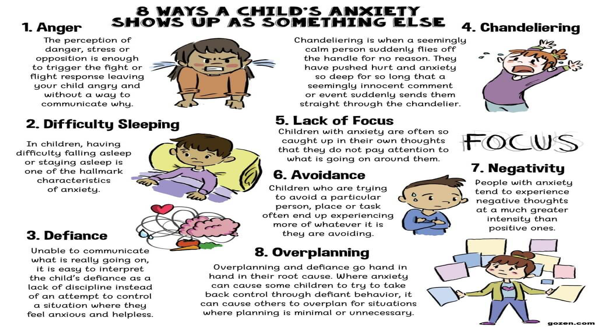Back to School Blues
It’s that time of year! School is back in session! Excited students shuffle down the hallway in new shoes, hands gripping the straps of their new backpacks. School supplies are new and crisp, waiting to be put to use by busy teachers and studious pupils. Sports teams are starting back up and athletes are more than ready to showcase their hard work and dedication to summer camps and fine tuning their skills. School pride is in the air! Or is it?
For many students, beginning a new school year can cause an increase in anxiety. Many individuals are struggling with the transition from elementary grades to middle grades, or from middle grades to high school. Some students are new to the county, or even to the state, and are worried about meeting new teachers and making new friends. Suddenly, your child has a stomach ache each morning, or maybe even cries in the parent drop off line. If this sounds like your child, you might be wondering how to approach the back to school blues. You are not alone! Anxiety is generally a normal part of beginning a new school year, but how do we know when it’s time to act? And furthermore, how do we know what actions to take? Take a look at the illustration below to better understand signs and symptoms that your child may be experiencing anxiety.
Now that you’ve determined your child is experiencing anxiety, what’s next? The first step in helping your child to manage back to school anxiety is to listen and validate. In adulthood it becomes easier to see the big picture, and to refer to past experiences for guidance on how to navigate difficult and unfamiliar situations. When speaking to children about anxiety, it is important to remember that their life experiences are much more limited, and the world is new and big. After your child has decompressed, work with your child to problem solve. Identifying specific triggers and ways to manage the anxiety that follows can help students to build confidence and self-esteem throughout the school day. Sharing your own experiences from school, or even from work, can help to normalize the anxiety your child feels about beginning a new school year. During this time, it can be difficult to focus on the positives. Encourage your child to list 3 things he or she is looking forward to at school for the day. Throughout it all, don’t forget to go back to the basics. Getting plenty of sleep, eating a healthy breakfast, having plenty of time to get ready in the morning, and to relax and wind down in the evening are vital components when it comes to managing and anxiety.
As the school year continues and the above steps are repeated as needed, the back to school blues should fade away. Remember, if the anxiety doesn’t dissipate, contacting a counselor may be a needed step.

